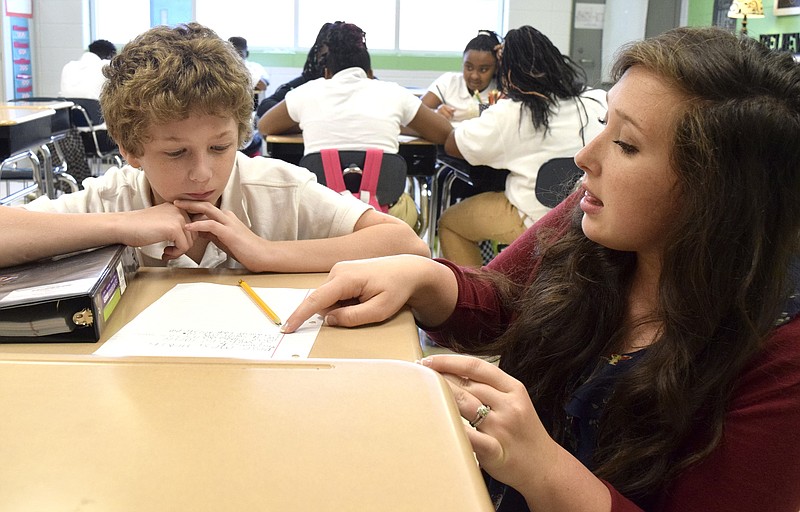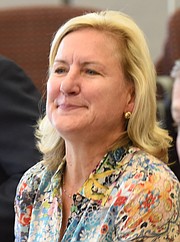10 urgent strategies
1. Strengthen and support families.2. Provide early-learning networks to help parents ready their children for school.3. Re-imagine learning to incorporate the 21st Century technology and the Gig into classrooms.4. Make reading a priority.5. Make great teaching a priority, and increase the number of highly effective teachers in classrooms.6. Empower and support principals — with training, not just lip service.7. Focus on equity in community schools to make all schools good schools.8. Prepare all students for college and career.9. Increase post-secondary completion.10. Connect more residents to high-paying jobs.
Hamilton County and Chattanooga are on a calamitous course headed to a land called Disconnect.
We have lots of new, good-paying jobs and plenty of innovation going on here in Gig City.
But we're short on well-prepared workers for those jobs.
Eighty percent of the jobs arriving in our county pay more than $35,000 a year. But they require some sort of post-secondary certificate or degree, and only 38 percent of us have that.
In Hamilton County, the problem starts very early - 60 percent of kindergartners are starting school not ready to learn. It isn't just that they don't know their ABCs or how to count. It's that they haven't been read to, and their vocabularies are so limited they cannot completely comprehend their teachers' instructions.
Likewise, 60 percent of our third-graders cannot read at their grade level, meaning they won't be able to keep up in coming years when their own reading will determine how they learn math and science - and even whether they can complete a job application later in life.
Now think about this thread: Only 40 percent of our children are kindergarten ready. Only 40 percent of our third-graders can read at their grade level. And only 38 percent of our young adults in the workforce have some sort of technical certificate or any kind of college degree. That's a reflection of Hamilton County education without a destination - let alone a road map.
So here we are, at the intersection of Main Street and Disconnect. And we need to get to Market Street and Prosperity. Quite clearly, we need a map, and that map has to start with education.
Fortunately for us, a handful of community leaders lead by the Benwood Foundation, the Chattanooga Area Chamber of Commerce, the Hamilton County Department of Education and the Public Education Foundation have drawn up a set of driving directions. The result of Chattanooga 2.0's efforts is a 10-point plan for urgent action.
The goals are to double the number of Hamilton County graduates who earn degrees or certificates from 650 a year to 1,300 a year by 2025 and to grow the number of working age adults with necessary post-secondary job credentials to 75 percent
"We're really at a significant moment for this community," said Sarah Morgan, a founding partner of Chattanooga 2.0 and president of the Benwood Foundation. "It's our chance to drive and press toward action so we can build an infrastructure of opportunity for everyone."
The problem isn't that we don't have good public schools. We have public magnet schools that have reputations of excellence so glowing that people wait in line to take lottery chances to enroll their children. The problem is that we don't have good schools for everyone.
Only one in 20 county students is enrolled in an exceptional or high-performing school.
The timing is right for Hamilton County to seize the day by endorsing and adopting Chattanooga 2.0. In December, the education group released a report with the sobering under-achievement data of our schools. Later that month, the community and school system were rocked with the horrifying news of a pool-cue rape of Ooltewah High School freshmen during a basketball trip. In March, former Superintendent Rick Smith resigned and was replaced by Interim Superintendent Kirk Kelly. The board is expected to start the search for the district's next leader in coming months.
This school board must not wait. These 10 strategies span learning opportunities from birth to career and are intended to be interwoven. Much of this plan can be accomplished with a combination of realigned resources, private resources and perhaps some new public resources, though not necessarily tax increases. Mostly, the plan rides on innovation and willingness to change - even to experiment.
If the plan's goals are met and its metrics hold true, Hamilton County would hold a more prosperous future for all, and as many as 8,000 adults would climb out of poverty, according to Chattanooga 2.0 leaders. That alone would increase county coffers and benefit our education budget in the long term.
Right now, Hamilton County's public education is all but flat-lined. Chattanooga 2.0's road map offers a well-thought-out route and regimen to success.
"People want better; the challenge is getting people to buy into different," says Jared Bigham, coordinator of Chattanooga 2.0.
It's time for us to recognize that in Hamilton County, better demands different.

